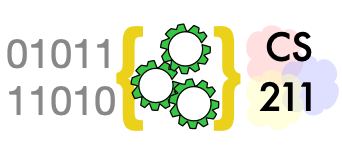Project: Sudoku Solver (part 1)#
You will find starter code and instructions for a Sudoku solver on github as usual.
Most students find this project quite challenging. Give yourself some time, including some time in help hours or scheduled time for discussion and mutual help with classmates if possible.
The Sudoku project can be completed in three stages:
In the first stage, you will build a representation of the Sudoku board, and an algorithm for checking whether the board is complete and consistent (i.e., a valid solution).
In the second stage, you will implement two basic algorithms for filling in missing tiles based on information in rows, columns, and blocks. Applying these algorithms repeatedly to propagate constraints is enough to solve many easy Sudoku puzzles.
In the third stage, you will write a recursive guess-and-check procedure that can solve any valid Sudoku puzzle. The guess-and-check algorithm is sufficient to solve puzzles by itself, but it is much faster when combined with the constraint propagation techniques from the second stage.
You can complete the first and second stages using the concepts in this chapter, “aliasing on purpose”. Read the next chapter, “recursive guess and check”, before tackling the third stage.
Learning objectives#
There is a lot going on in this project! Key learning objectives include:
Reinforcing your grasp of aliasing, which allows us to keep references to the same object in multiple collections (on purpose, this time).
Practice in devising and coding loop algorithms on lists. The hidden single and naked single solving techniques are both multi-pass algorithms using lists and sets.
Introduction to constraint propagation as a general problem-solving technique. This and the recursive guess-and-check algorithm in the third stage are fundamental algorithmic techniques that are often used in artificial intelligence among other domains.

